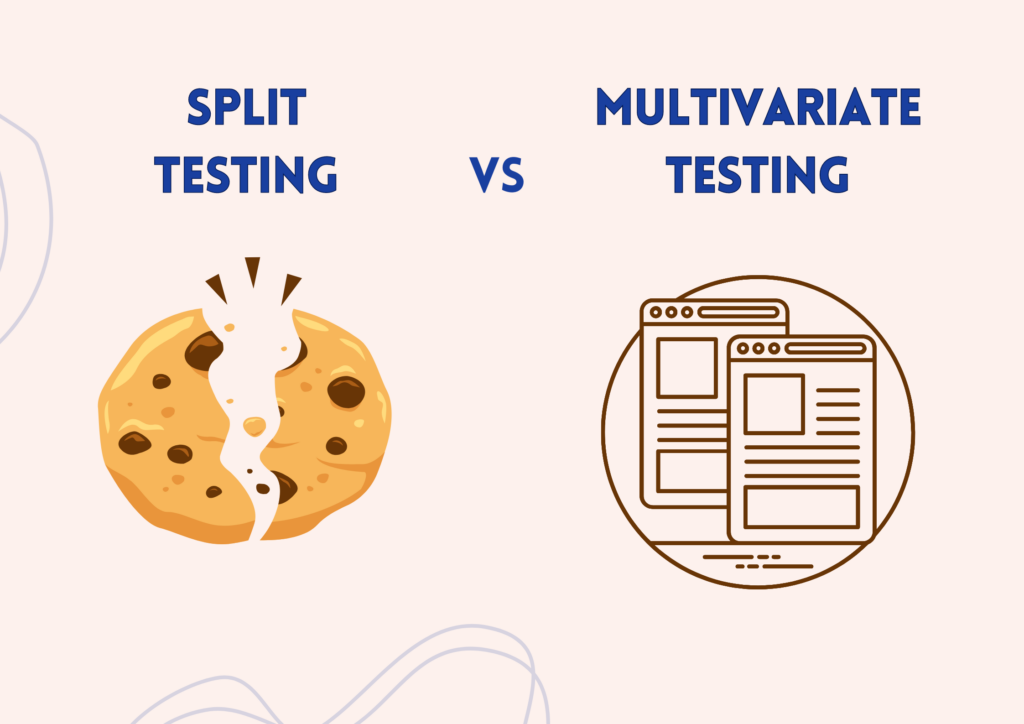What is the Difference Between Multivariate Testing and Split Testing?
Testing again and again is the way to go when you are getting started with conversion rate optimization.
Every button, word, and pixel has the power to affect user behavior and increase conversion rates. To effectively navigate this landscape, marketers use a variety of testing methodologies, with Multivariate Testing and Split Testing standing out as critical tools.
But what makes them different from each other? In this blog, we are going to understand the basics of split testing and multivariate testing, which strategy you should use, and how to get the maximum benefit.

Understanding the Basics
It is important to understand the basic concepts of split testing and multivariate testing before diving into their differences.
A/B Split Testing:
A/B testing, sometimes referred to as split testing, compares two iterations of a webpage, email, or app feature to see which one works better. Two groups of the audience are presented with different variants (A or B) in this instance. Marketers can determine which variant produces better results in terms of conversions, click-through rates, or other predetermined metrics by comparing the responses of each group.
Multivariate Testing:
The process of conducting a multivariate test involves evaluating multiple variables at the same time, which increases the complexity of experimentation. In contrast to Split Testing, which takes two variations into account, Multivariate Testing looks at multiple element combinations in order to identify the best combination. This method is perfect for intricate websites or applications with numerous interactive components because it provides deeper insights into how various elements interact and influence user behavior.
How Does It Impact the Campaigns?
- The complexity of the variables
-Split Testing: It compares two different versions, usually changing one element at a time, like the color of the button or the text in the headline.
– Multivariate Testing: It enables marketers to examine how various element combinations interact with one another by evaluating multiple variables at once.
- Level of Detail in Insights:
– Split Testing: Makes it simpler to determine the effect of particular changes by offering clear-cut insights into the performance of individual variations.
– Multivariate testing: Provides deeper insights by analyzing how different components interact, allowing marketers to spot intricate patterns and maximize the ways in which different components work together.
- Allocation of Resources:
– Split Testing: This method works well for small-scale experiments or when time is of the essence because it uses fewer resources and can be put into practice rather quickly.
– Multivariate testing: This type of testing is more appropriate for extensive optimization work, but it requires more dedication of time and resources because it involves analyzing multiple variables at once.
- Importance of Statistics:
-Split testing: it allows marketers to draw firm conclusions from smaller sample sizes because it compares only two variations, making statistical significance easier to attain.
– Multivariate testing: Because many variables are being tested, larger sample sizes are needed to achieve statistical significance, which calls for more intensive data collection.
When to Use Which Strategy?
Many factors, such as the intricacy of the website or application, the particular objectives of the study, and the availability of resources, must be taken into consideration when choosing the right testing methodology. Here’s a quick guide to assist you in choosing the strategy that best fits your goals:
Split testing is useful when:
– Testing comparatively easy adjustments, like different headlines or button colors.
– Looking for quick answers or running preliminary studies to guide more comprehensive optimization plans.
– Having to experiment and iterate quickly due to time constraints or limited resources.
Use multivariate testing when:
– Assessing intricate relationships between various components, such as various arrangements of call-to-action buttons, images, and headlines.
– Trying to maximize user journeys or conversion paths that incorporate numerous touchpoints and interactions.
– Carrying out thorough optimization operations that demand a better comprehension of how different components affect overall performance.
We now have a better grasp of the subtleties, advantages, and uses of each in the field of digital optimization, which brings our investigation into the differences between Multivariate Testing and Split Testing to a close. In the ever-changing world of digital marketing, these insights could be your guide through the complexities of experimentation and optimization and show you the way to data-driven decision-making and sustainable growth.
